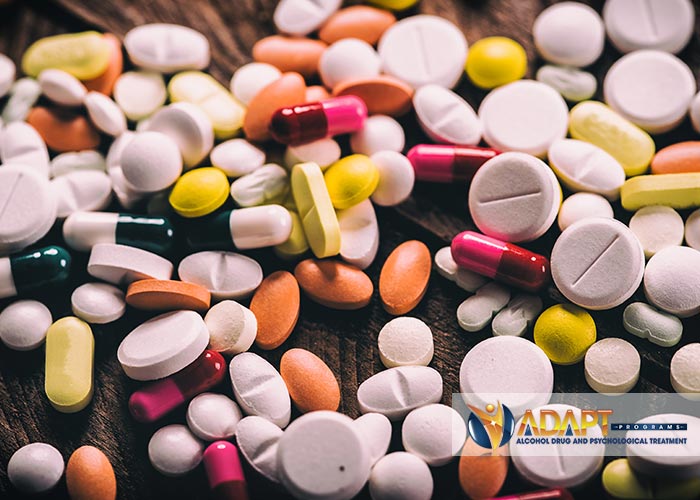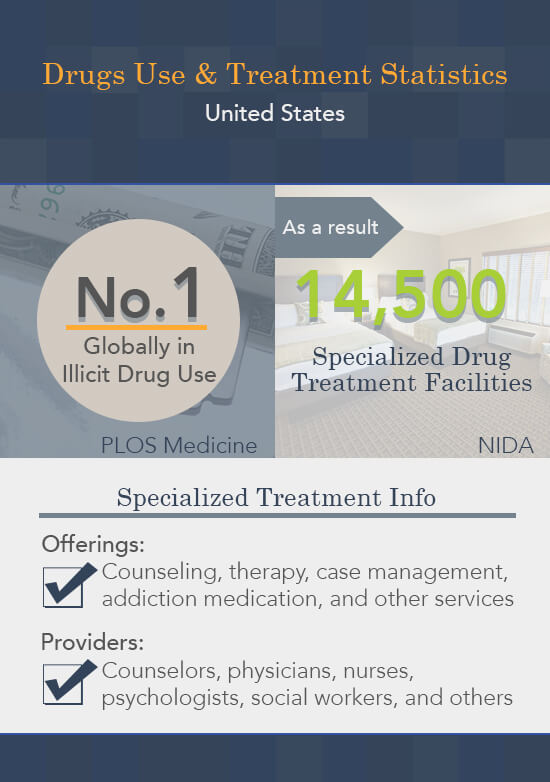At requirement inpatient treatment facilities, the rooms are often standard, with a comfy bed, a restroom, and space for personal items. Expenses might be lower at these centers if the client http://edgarzcwl831.fotosdefrases.com/some-known-factual-statements-about-which-of-these-is-not-a-valid-description-of-drug-addiction is willing to share a room. There may also be access to a pool or an on-site gym, although that is not ensured.
Beyond basic treatment choices, there are likewise high-end and executive facilities. These centers tend to be in lovely places and can offer high end features and servicesincluding acupuncture, equine therapy, health club treatments, and morein addition to the treatments common at all rehab facilities. There is more to a compound use disorder than drug use.
Find out more about who answers and what to anticipate. Regular treatment sessions post-rehab, both private and group therapy, can assist patients remain liable to their sobriety on their course towards healing. Even after patients have completed their initial rehab program, they are not ended up with healing workin reality, recovery is a long-lasting process.
Building a solid strategy of aftercare is essential, but the individual components of aftercare may differ from someone to the next. Many dependency rehab centers host their own follow-up programs to help clients as they go back to their daily lives. Such aftercare programs may include extra counseling, conferences, and classes for alumni of the treatment program along with other individuals in the community.
Numerous dependency rehabilitation facilities use follow-up programs to help clients as they return to their every day lives. Lots of clients maintain regular therapy sessions post-rehab, and some send to set up drug testing as a method to keep them liable to their sobriety. Regular group therapy presence is a terrific approach for developing a support group Drug Rehab in your local location.
What Is Drug Addiction Like Things To Know Before You Buy
Recovery is a long-lasting procedure. Are you prepared to start on your path towards sobriety? Call our help line at for assistance. Discover more about who answers and what to expect. National Institute on Substance Abuse. (2018 ). Concepts of Drug Addiction Treatment: A Research-Based Guide (Third Edition): Types of Treatment Programs.
( 2019 ). National Institute on Substance Abuse. (2018 ). National Institute on Substance Abuse. (2018 ). Principles of Drug Dependency Treatment: A Research-Based Guide (Third Edition): Principles of Reliable Treatment. National Institute on Drug Abuse. (2018 ). Principles of Addiction Treatment Facility Drug Addiction Treatment: A Research-Based Guide (Third Edition): Is making use of medications like methadone and buprenorphine merely replacing one addiction with another? National Institute on Drug Abuse.
Processes of treatment for drug dependence Drug rehab is the process of medical or psychotherapeutic treatment for reliance on psychedelic substances such as alcohol, prescription drugs, and street drugs such as marijuana, drug, heroin or amphetamines. The general intent is to allow the client to face substance reliance, if present, and cease drug abuse to prevent the psychological, legal, monetary, social, and physical repercussions that can be triggered, specifically by extreme abuse.
Mental dependence is addressed in numerous drug rehabilitation programs by trying to teach the individual new approaches of engaging in a drug-free environment. In specific, patients are normally motivated, or possibly even required, to not connect with peers who still utilize the addictive compound. Twelve-step programs motivate addicts not just to stop using alcohol or other drugs, but to take a look at and alter routines associated with their addictions.

For legal drugs such as alcohol, total abstentionrather than attempts at moderation, which may result in regressionis likewise emphasized (" One is too many, and a thousand is never enough.") Whether small amounts is achievable by those with a history of abuse stays a questionable point (which neurotransmitter is involved in drug addiction). The brain's chemical structure is affected by drugs of abuse and these modifications exist long after a specific stops utilizing.
Some Known Facts About Which Of The Following Statements Is True About Drug Addiction?.
Various types of programs provide help in drug rehab, consisting of: domestic treatment (in-patient/out-patient), regional assistance groups, extended care centers, healing or sober houses, addiction counselling, psychological health, and medical care. Some rehab centers offer age- and gender-specific programs. In an American survey of treatment providers from three different institutions (the National Association of Alcoholism and Substance Abuse Counselors, Reasonable Recovery Systems and the Society of Psychologists in Addicting Habits) determining the treatment provider's responses on the Spiritual Belief Scale (a scale measuring belief in the four spiritual attributes Alcoholics Anonymous recognized by Ernest Kurtz); ball games were found to discuss 41% of the variance in the treatment provider's actions on the Dependency Belief Scale (a scale measuring adherence to the illness design or the free-will model addiction).

The National Institute on Drug Abuse (NIDA) advises detoxing followed by both medication (where appropriate) and behavior modification, followed by relapse prevention. According to NIDA, efficient treatment must attend to medical and mental health services in addition to follow-up choices, such as community or family-based recovery support systems. Whatever the methodology, client motivation is an essential consider treatment success.
Medication like methadone and buprenorphine can be utilized to treat addiction to prescription opiates, and behavioral therapies can be utilized to treat addiction to prescription stimulants, benzodiazepines, and other drugs. Kinds of behavior modification consist of: Cognitive-behavioral therapy, which looks for to assist clients to acknowledge, avoid and deal with circumstances in which they are more than likely to relapse.
Inspirational talking to, which is developed to increase client inspiration to change behavior and enter treatment. Inspirational rewards, which uses positive reinforcement to encourage abstaining from the addictive substance. EEG Biofeedback enhanced treatment enhances abstinence rates of 12-step, faith-based and clinically helped dependency for drug, methamphetamine, alcohol addiction and opioid dependencies. Treatment can be a long procedure and the duration is dependent upon the patient's requirements and history of abuse.
Particular opioid medications such as methadone and more buprenorphine are commonly utilized to treat dependency and dependence on other opioids such as heroin, morphine or oxycodone. Methadone and buprenorphine are upkeep therapies intended to decrease cravings for opiates, thus decreasing prohibited drug use, and the risks related to it, such as disease, arrest, imprisonment, and death, in line with the approach of damage decrease.
The 25-Second Trick For How To Beat Drug Addiction
All offered research studies gathered in the 2005 Australian National Assessment of Pharmacotherapies for Opioid Reliance recommend that upkeep treatment is more suitable, with extremely high rates (79100%) of relapse within three months of detoxing from levo-- acetylmethadol (LAAM), buprenorphine, and methadone. According to the National Institute on Drug Abuse (NIDA), clients supported on adequate, continual dosages of methadone or buprenorphine can keep their tasks, avoid crime and violence, and decrease their direct exposure to HIV and Liver Disease C by stopping or reducing injection substance abuse and drug-related high risk sexual habits.
It is generally recommended in outpatient medical conditions. Naltrexone obstructs the euphoric results of alcohol and opiates. Naltrexone cuts relapse threat in the first three months by about 36%. Nevertheless, it is far less effective in assisting clients preserve abstaining or maintaining them in the drug-treatment system (retention rates typical 12% at 90 days for naltrexone, typical 57% at 90 days for buprenorphine, average 61% at 90 days for methadone).